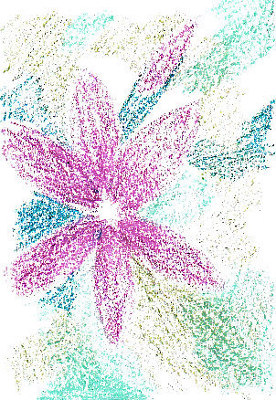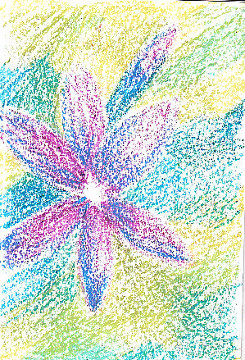Today, we started trying to create our own lessons that we may want to teach to our future students. We looked through books provided to us by our professor that are tied to the different elements and principles of design. In Creative Colored Pencil Workshop by Carlynne Hershberger and Kelli Money Huff, I found a great lesson on Tonal Layering using colored pencils (Prisma colored pencils are the best to use).
Tonal layering is the method of applying colored pencils in multiple light layers to build color. You're basically creating a smooth area of color without visible pencil strokes. There are four steps in creating this technique:
1. Draw, then apply the first layer.
2. Add more color and begin modeling.
3. Deepen the colors.
4. Add the dark values.
Here is my example that I created for my students to see. I didn't use Prisma colors, just regular colored pencils because that's what I had available at the time. Depending on the school's budget, you could get Prisma colored pencils for all your students. If not, they may have to use regular colored pencils, which is fine, because they'll still get the concept.
This would tie to the elements of value and texture, along with the principle of unity because the goal is to unify the piece adding layers of colors so that the pencil lines aren't showing.
Before I do this lesson with my students, we would research on artists that include tonal layering in their work. Artist like Robert Sloan and Linda MaCauley are good examples because they incorporate tonal layering with different mediums, such as oil pastels and watercolors.


Above is a work of art by Robert Sloan.













